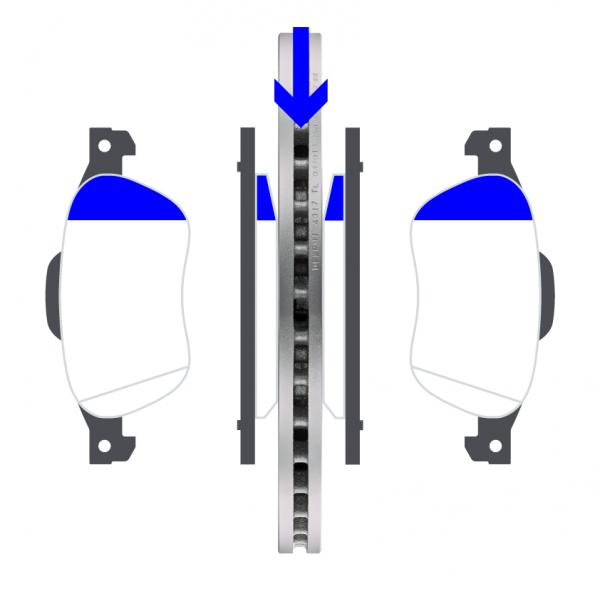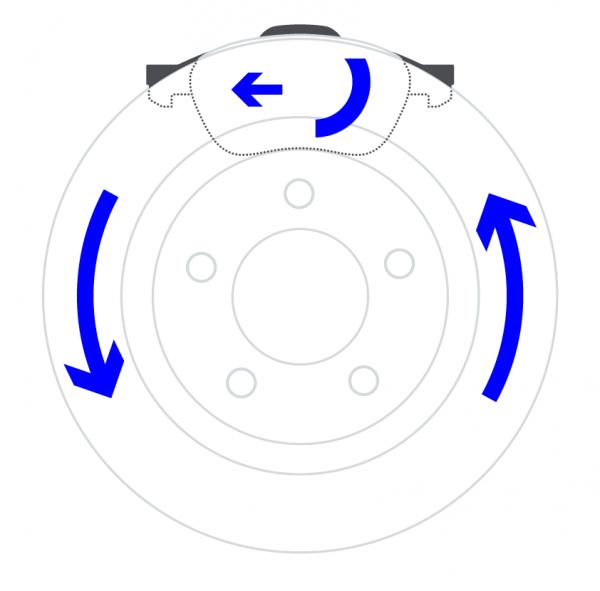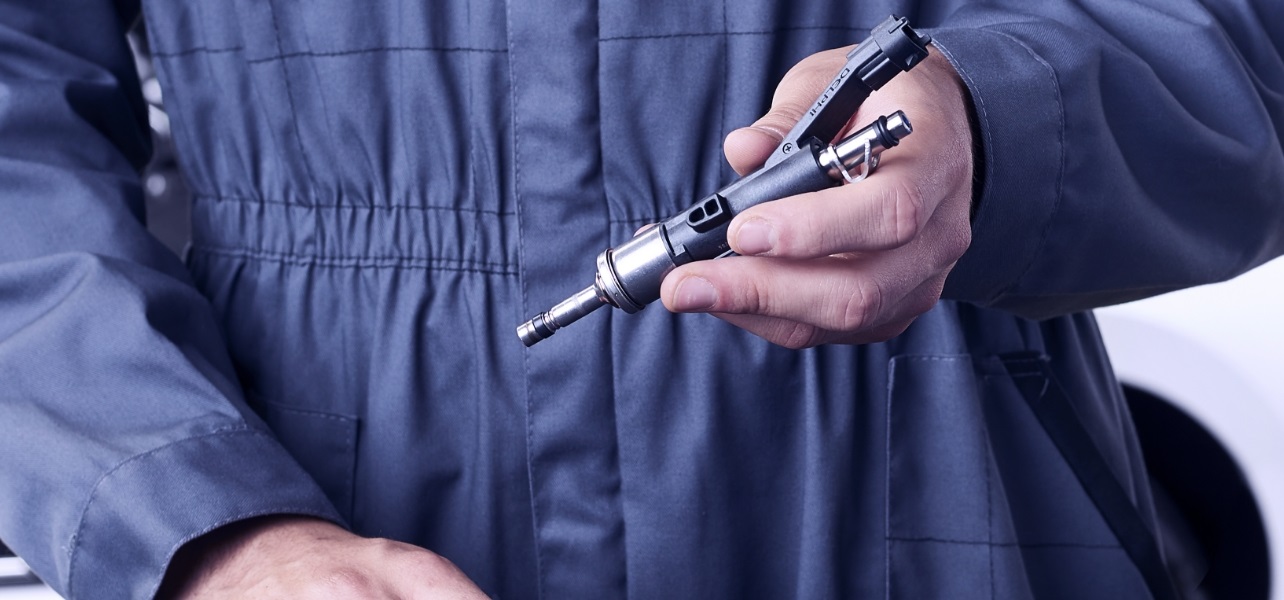As automotive technology evolves, and with it customer expectations for a quieter more relaxing ride, noise, vibration and harshness (NVH) reducing technologies are becoming a must. Whilst the emergence of quieter, electric and hybrid vehicle technologies should, in theory, lower NVH levels, the reality is very different – the loss of the engine masking sound is simply exposing other areas such as suspension, HVAC and braking – noises that may not have been obvious to the driver beforehand. Add to this greater emphasis on the whole in-car experience, with ever sophtisticated infotainment and connectivity systems, and noise issues are becoming an area of increasing concern for vehicle and parts manufacturers alike.
Cue our range of directional brake pads. Featuring either a chamfered friction surface or a crescent cut out of the shim, they must be mounted in a specific direction for optimal pad to disc contact. By introducing the pad to the disc at a gentle angle, the likelihood of both noise and vibration is significantly reduced for even quieter braking.
Chamfer or crescent?
You won’t be surprised to learn that chamfer directional brake pads use a chamfer, a transitional surface between two adjoining faces, on either the leading edge or both edges of the pad. This helps to prevent the leading edge of the pad from lifting from the disc for maximum pad to disc contact, encourages even pad wear and reduces both noise and vibration.
Similarly, a crescent cut-out directional brake pad has a crescent or half-moon shape cut out from the shim. The shim, made up of finely tuned layers of dampening material bonded to the pad assembly, helps to reduce both the transmission and amplitude of vibration and acts as a thermal barrier, ensuring uniform temperatures across the pad, and in turn consistent brake torque. The addition of a cut-out allows the piston to push the brake pad at the optimal angle, reducing noise and aiding even pad wear.
It’s all in the fitting
Whilst chamfer and shims are nothing new - we’ve been fitting them on our pads, as per the OE, for years – the way the pads are installed is. As their name suggests ‘directional pads’ must be installed in a specific direction to ensure optimal noise performance. In contrast, fitting them in the wrong direction can reduce braking efficiency, and may increase the possibility of brake noise, the very thing these pads are designed to prevent. Because of this, it pays to take the time to learn how to install them the right way.
Which way is right?
Many Delphi Technologies directional pads use either a letter, indicating which side of the vehicle the pad should be fitted to, or an arrow showing the rotational direction of the disc and hence the direction in which the pad should be fitted. If no arrow is present, then the following ground rules apply:
- For pads fitted with a one chamfer, introduce the chamfer, the largest if more than one, at the leading edge where the pad and disc first come into contact.
- If the pad features a cut-out, position the crescent or half-moon at the leading edge of the pad.


Choosing Delphi Technologies!
Once you’ve got to grips with the basics, fitting directional pads will become a straightforward job. The choice of which brand to fit is just as easy. With an OE-matching range, we cover nearly 4 million vehicles, with important applications such as Audi Q7, Q8, BMW 525, 530, 540, 725, 730, Ford Galaxy, Mondeo, S-Max, Mini Cooper S Clubman, Countryman and Volvo XC90. Future parts will be developed in line with the OE.






